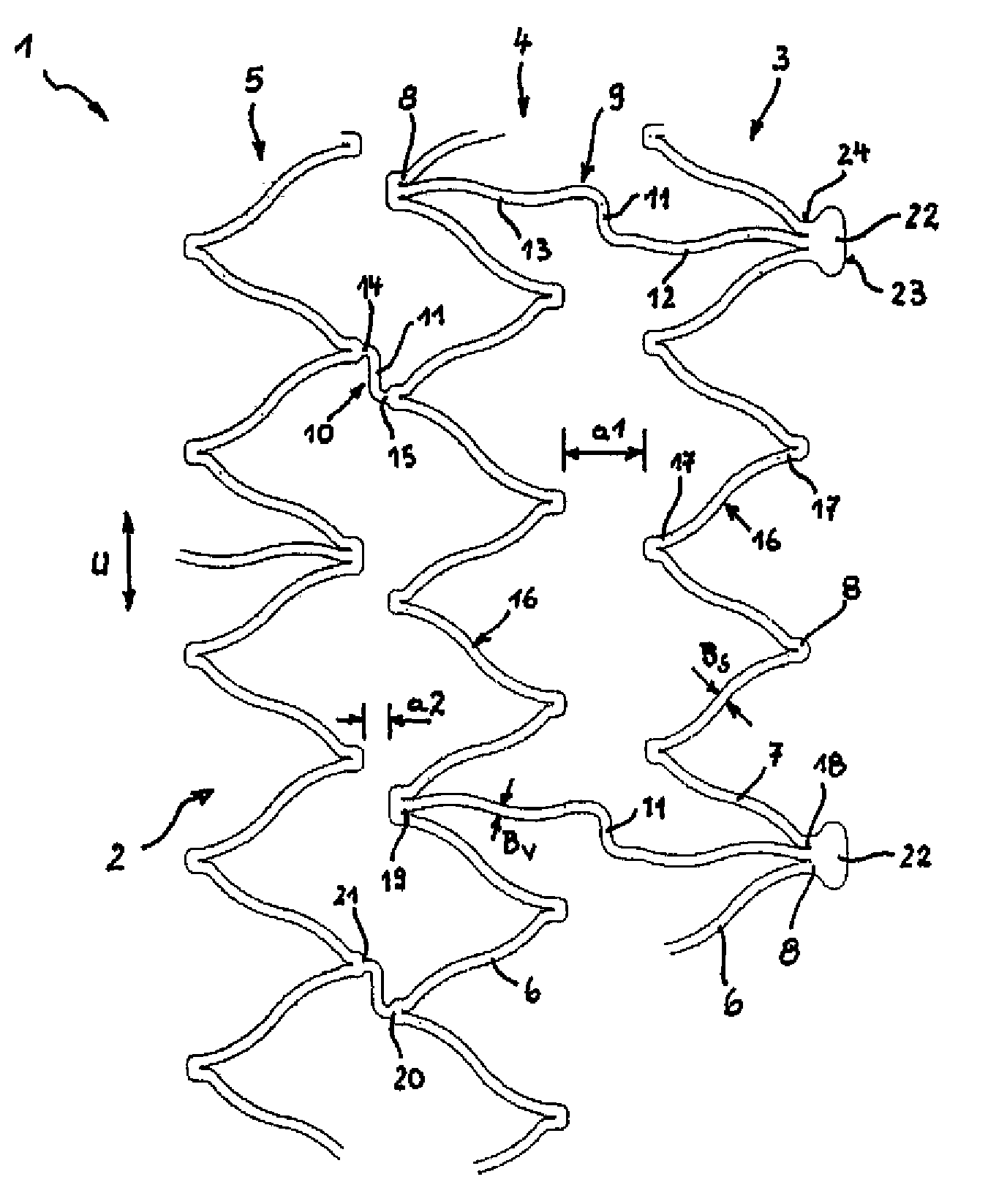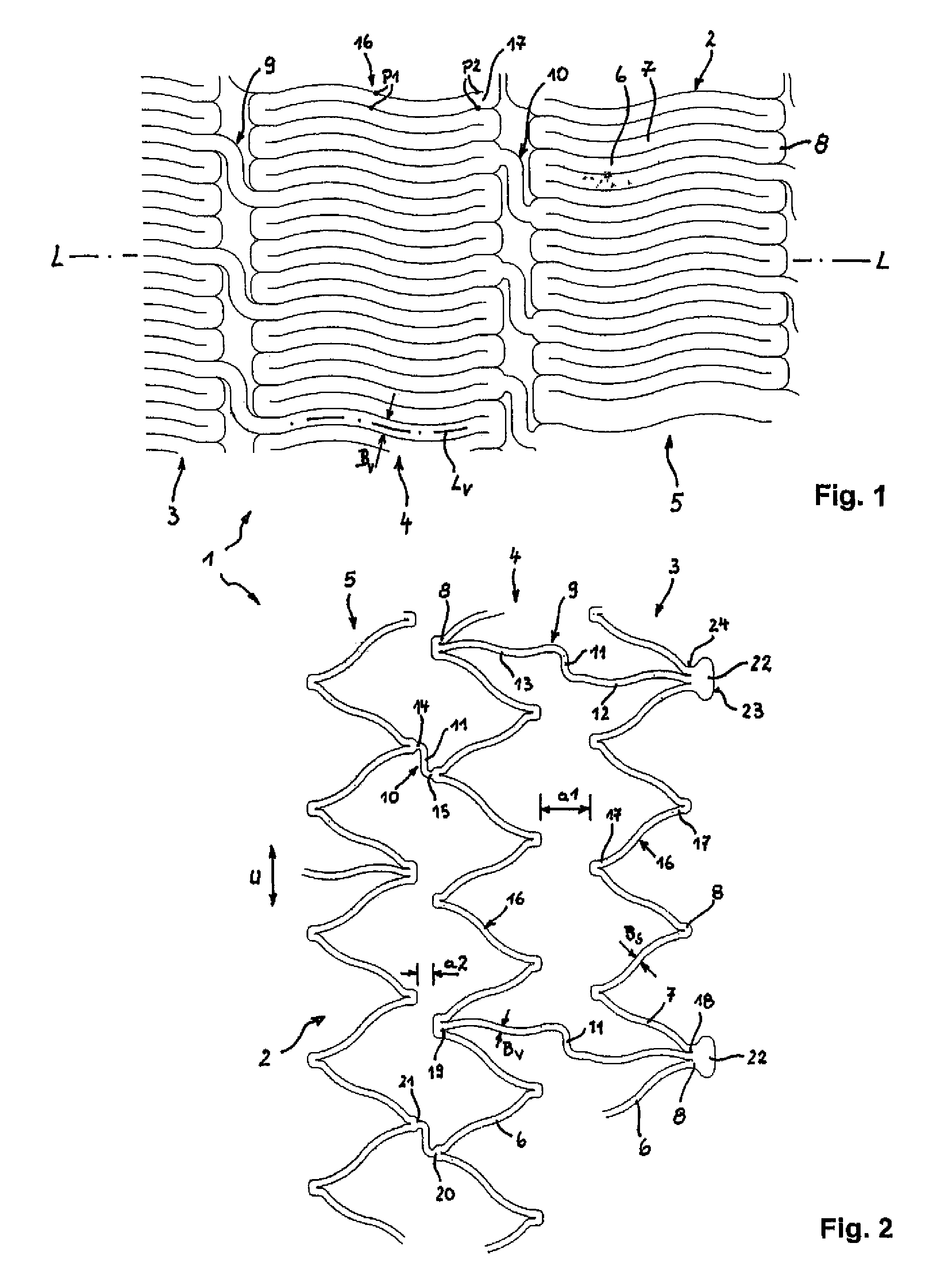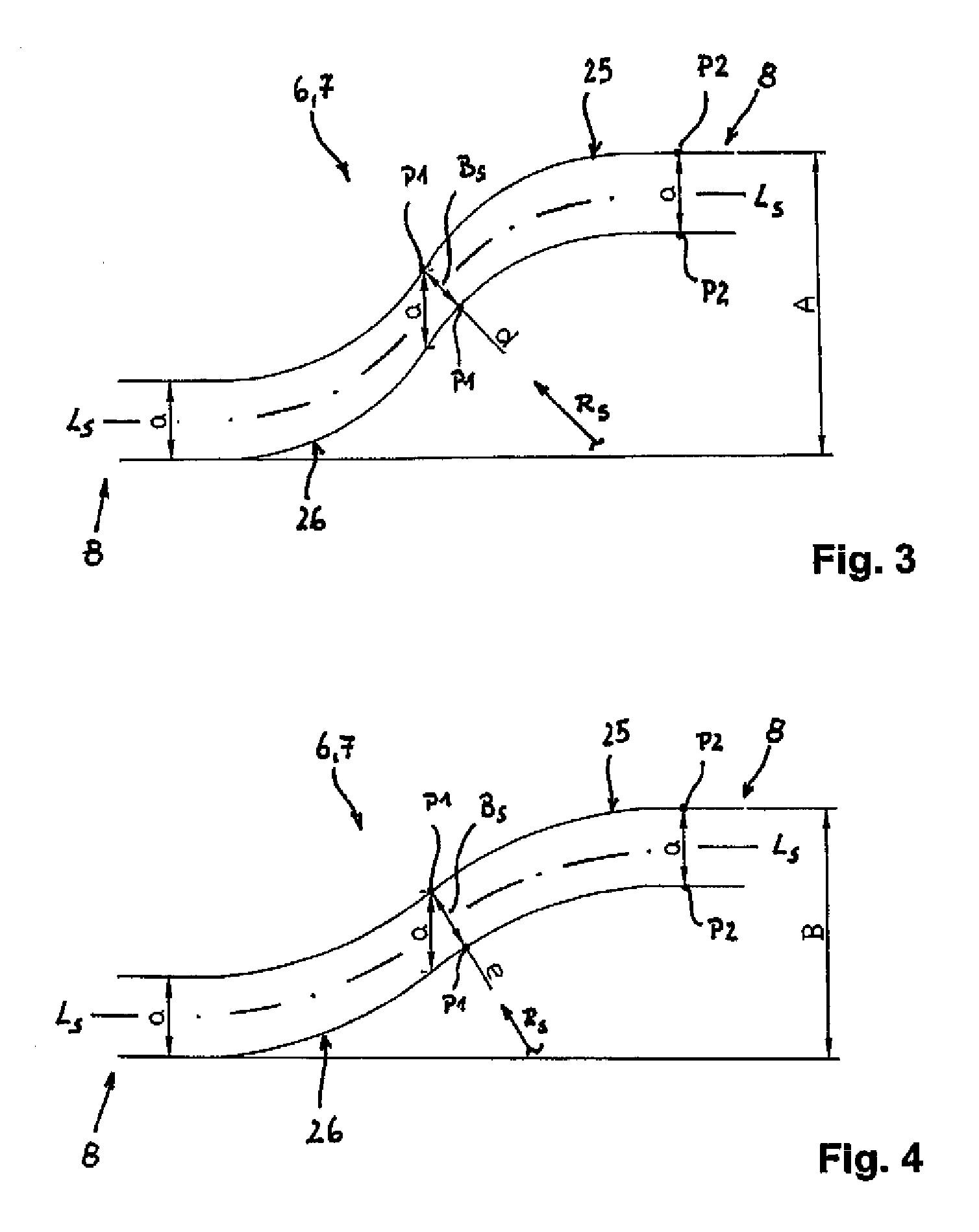Stent
a stent and vascular wall technology, applied in the field of stents, can solve the problems of no other options and high risk of fracture, and achieve the effects of reducing the risk of injury, improving the application of inventive stents, and reducing the trauma to the vascular wall
- Summary
- Abstract
- Description
- Claims
- Application Information
AI Technical Summary
Benefits of technology
Problems solved by technology
Method used
Image
Examples
Embodiment Construction
[0036]FIGS. 1 and 2 each show a developed view of a section from the layout pattern of a stent 1 according to the invention. FIG. 1 shows the layout of stent 1 in an unexpanded initial state. FIG. 2 shows the layout of the stent pattern in the expanded supporting state.
[0037]Stent 1 is made of a metal, in particular nitinol, and has a tubular support frame 2 comprised of several sequentially arranged ring segments 3, 4, 5. The stent 1 can generally have different lengths. FIGS. 1 and 2 do not show the total number of a ring segments 3, 4, 5 of the stent 1.
[0038]The ring segments 3, 4, 5 are formed by segment struts 6, 7 which are joined by tie bars 9, 10 in a sequential endless pattern. Depicted are first long tie bars 9 and second short tie bars 10. An arm 11 extending in the circumferential direction U of the support frame 2 is provided in each tie bar 9, 10. The arm 11 is connected on both sides via axial sections 12, 13; 14, 15 to a transition 8. The arms 11 are each arranged in...
PUM
 Login to View More
Login to View More Abstract
Description
Claims
Application Information
 Login to View More
Login to View More - R&D
- Intellectual Property
- Life Sciences
- Materials
- Tech Scout
- Unparalleled Data Quality
- Higher Quality Content
- 60% Fewer Hallucinations
Browse by: Latest US Patents, China's latest patents, Technical Efficacy Thesaurus, Application Domain, Technology Topic, Popular Technical Reports.
© 2025 PatSnap. All rights reserved.Legal|Privacy policy|Modern Slavery Act Transparency Statement|Sitemap|About US| Contact US: help@patsnap.com



